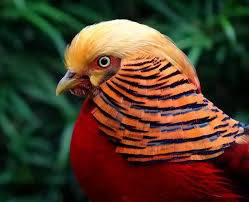Discovering Unique Birds from Five Countries
Birdwatching offers a glimpse into the rich biodiversity of our planet, with each country hosting unique avian species that reflect their distinct ecosystems. Here, we explore five countries and the remarkable birds that inhabit them, showcasing the diversity and beauty of avifauna across the globe.
1. Australia: The Emu
Australia is home to the iconic emu (Dromaius novaehollandiae), the world’s second-largest bird. This flightless giant can grow up to six feet tall and is characterized by its long neck and legs, shaggy brown feathers, and distinctive three-toed feet. Emus are known for their curious and inquisitive nature, often found wandering through a variety of habitats, including grasslands and forests. They play a vital role in their ecosystem, as they help disperse seeds and maintain the health of their environment. The emu's unique adaptations, such as its powerful legs that enable it to run at high speeds, make it a fascinating subject for birdwatchers.
2. Brazil: The Hyacinth Macaw
In the heart of the Amazon rainforest, the hyacinth macaw (Anodorhynchus hyacinthinus) captivates with its stunning cobalt-blue plumage and impressive wingspan, which can reach nearly four feet. As the largest flying parrot species, the hyacinth macaw is a social bird, often seen in pairs or small flocks. These birds primarily feed on nuts, seeds, and fruits, using their strong beaks to crack open tough shells. Unfortunately, habitat loss and the illegal pet trade have threatened their population, making conservation efforts critical for their survival. Observing these magnificent birds in their natural habitat is a rare and rewarding experience.
3. India: The Indian Peafowl
India’s national bird, the Indian peafowl (Pavo cristatus), is renowned for its spectacular plumage and courtship displays. Males are adorned with iridescent blue and green feathers, which they fan out in a breathtaking display to attract females. This bird is commonly found in forests, grasslands, and near agricultural fields. The peafowl's diet consists of seeds, fruits, insects, and small mammals. Beyond its striking appearance, the Indian peafowl is also steeped in cultural significance, often depicted in Indian art and mythology. Its presence in rural and urban areas alike makes it a beloved symbol of India’s wildlife.
4. South Africa: The African Penguin
The African penguin (Spheniscus demersus), also known as the jackass penguin due to its distinctive braying call, is a unique species found along the southwestern coast of Africa. These medium-sized penguins have a black and white coloration, with a characteristic patch of pink skin above their eyes. They primarily feed on fish and squid and are known for their social behavior, often nesting in colonies. African penguins face numerous threats, including habitat destruction, overfishing, and climate change, leading to significant declines in their population. Conservation programs are vital for their protection, and visiting their colonies offers a chance to appreciate these charming birds in the wild.
5. United States: The Bald Eagle
The bald eagle (Haliaeetus leucocephalus), an enduring symbol of the United States, is renowned for its striking white head and tail contrasting against a dark brown body. As a top predator, the bald eagle primarily feeds on fish but is also known to scavenge. These birds prefer habitats near large bodies of open water, where they can build massive nests in tall trees or on cliffs. Once endangered due to hunting and pesticide use, the bald eagle has made a remarkable recovery thanks to conservation efforts. Spotting a bald eagle soaring high in the sky is a powerful reminder of nature's resilience and the importance of protecting wildlife.
Conclusion
Each of these countries showcases a unique bird that reflects its environmental and cultural heritage. From the emu of Australia to the bald eagle of the United States, these avian species not only enrich our planet's biodiversity but also remind us of the importance of conservation efforts to protect their habitats and ensure their survival for future generations. Whether you're a seasoned birdwatcher or a casual observer, exploring these unique birds offers a deeper appreciation for the natural world.


